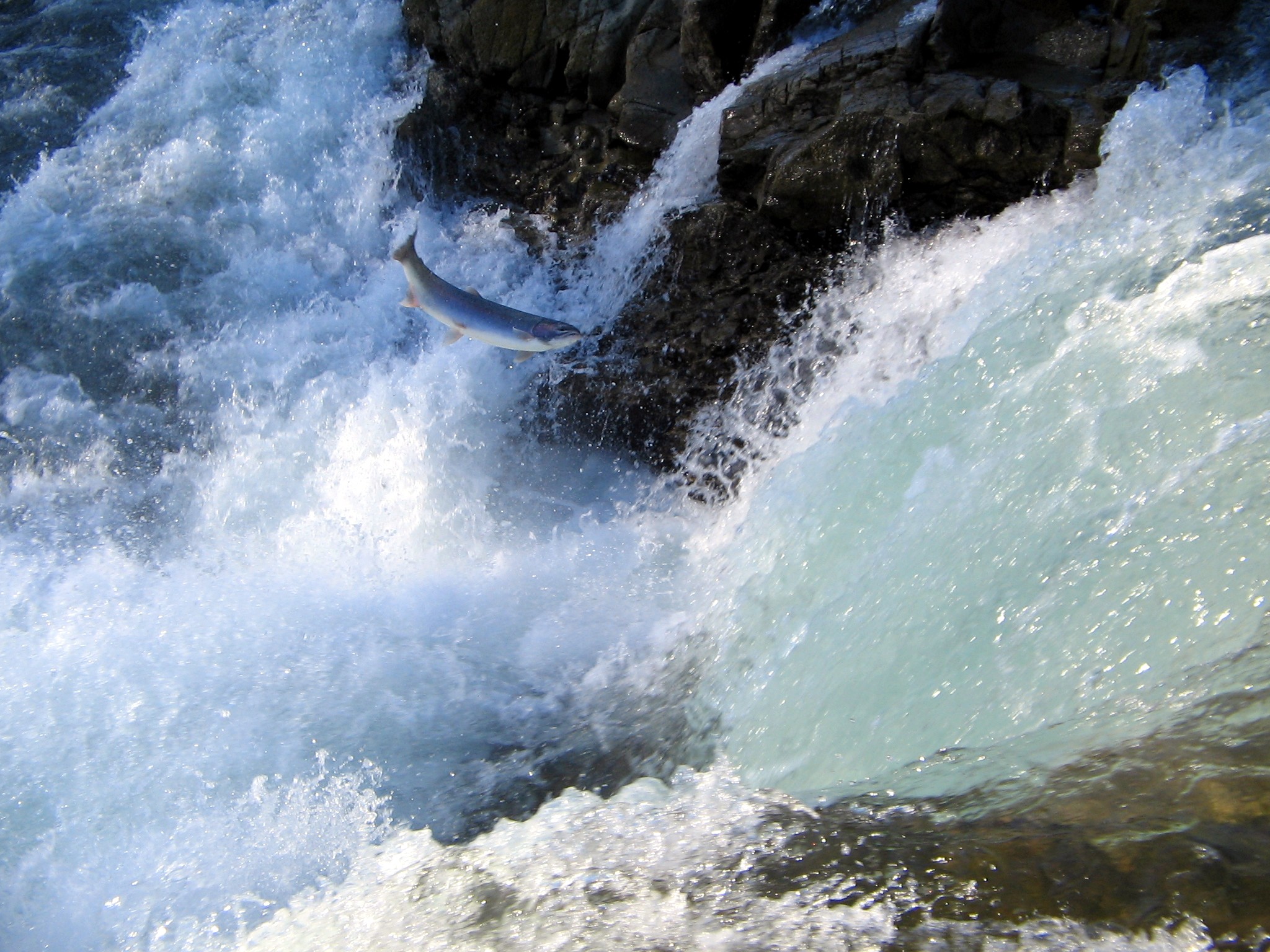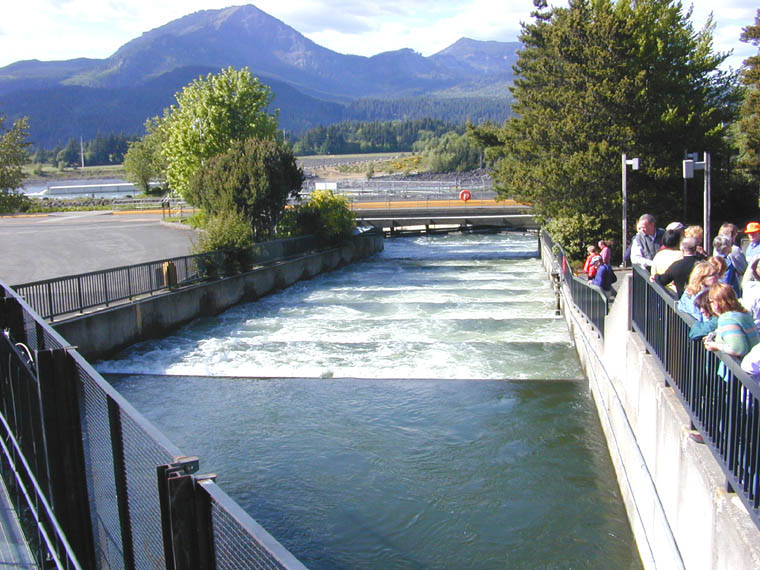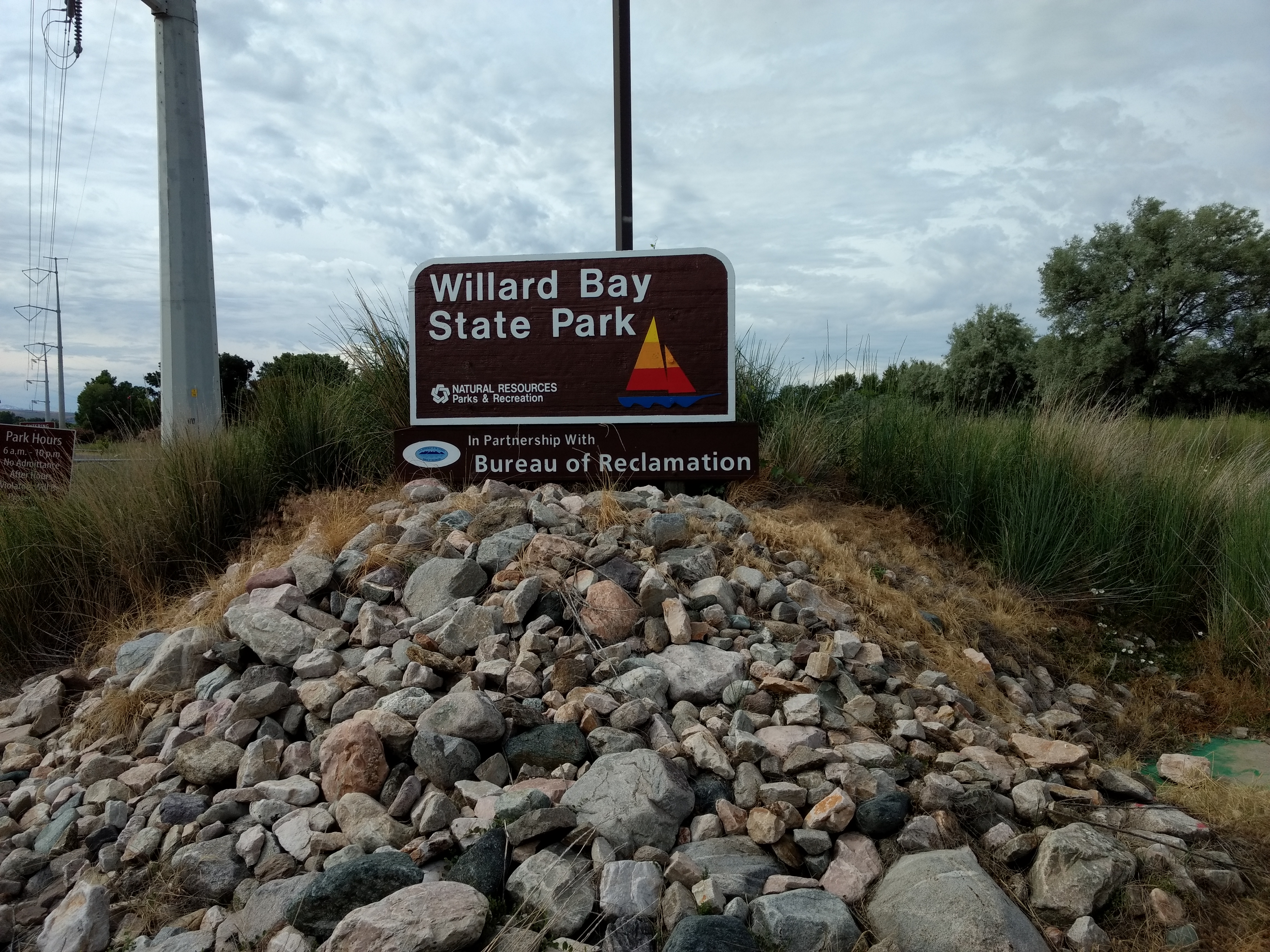|
Dam Removal
Dam removal is the process of demolishing a dam, returning water flow to the river. Arguments for dam removal consider whether their negative effects outweigh their benefits. The benefits of dams include hydropower production, flood control, irrigation, and navigation. Negative effects of dams include environmental degradation, such as reduced primary productivity, loss of biodiversity, and declines in native species; some negative effects worsen as dams age, like structural weakness, reduced safety, sediment accumulation, and high maintenance expense. The rate of dam removals in the United States has increased over time, in part driven by dam age. As of 1996, 5,000 large dams around the world were more than 50 years old. In 2020, 85% percent of dams in the United States are more than 50 years old. In the United States roughly 900 dams were removed between 1990 and 2015, and by 2015, the rate was 50 to 60 per year. France and Canada have also completed significant removal proje ... [...More Info...] [...Related Items...] OR: [Wikipedia] [Google] [Baidu] |
Fish Migration
Fish migration is mass relocation by fish from one area or body of water to another. Many types of fish migrate on a regular basis, on time scales ranging from daily to annually or longer, and over distances ranging from a few metres to thousands of kilometres. Such migrations are usually done for better feeding or to reproduce, but in other cases the reasons are unclear. Fish migrations involve movements of schools of fish on a scale and duration larger than those arising during normal daily activities. Some particular types of migration are ''anadromous'', in which adult fish live in the sea and migrate into fresh water to spawn; and ''catadromous'', in which adult fish live in fresh water and migrate into salt water to spawn. Marine forage fish often make large migrations between their spawning, feeding and nursery grounds. Their movements are associated with ocean currents and with the availability of food in different areas at different times of the year. The migratory ... [...More Info...] [...Related Items...] OR: [Wikipedia] [Google] [Baidu] |
Columbia River
The Columbia River (Upper Chinook language, Upper Chinook: ' or '; Sahaptin language, Sahaptin: ''Nch’i-Wàna'' or ''Nchi wana''; Sinixt dialect'' '') is the largest river in the Pacific Northwest region of North America. The river headwater, forms in the Rocky Mountains of British Columbia, Canada. It flows northwest and then south into the U.S. state of Washington, then turns west to form most of the border between Washington and the state of Oregon before emptying into the Pacific Ocean. The river is long, and its largest tributary is the Snake River. Columbia River drainage basin, Its drainage basin is roughly the size of France and extends into seven states of the United States and one Canadian province. The fourth-largest river in the United States by River flow, flow, the Columbia has the greatest flow of any river into the eastern Pacific. The Columbia and its tributaries have been central to the region's culture and economy for thousands of years. They have been use ... [...More Info...] [...Related Items...] OR: [Wikipedia] [Google] [Baidu] |
Bonneville Power Administration
The Bonneville Power Administration (BPA) is an American federal agency operating in the Pacific Northwest. BPA was created by an act of United States Congress, Congress in 1937 to market electric power from the Bonneville Dam located on the Columbia River and to construct facilities necessary to transmit that power. Congress has since designated Bonneville to be the marketing agent for power from all of the federally owned hydroelectric projects in the Pacific Northwest. Bonneville is one of four regional Federal Power Marketing Administration, power marketing agencies within the United States Department of Energy, U.S. Department of Energy (DOE). Operations The power generated on BPA's grid is sold to public utilities, private utilities, and industry on the grid. The excess is sold to other grids in Canada, California and other regions. Because BPA is a public entity, it does not make a profit on power sales or from providing transmission services. BPA also coordinates ... [...More Info...] [...Related Items...] OR: [Wikipedia] [Google] [Baidu] |
Fish Ladder
A fish ladder, also known as a fishway, fish pass, fish steps, or fish cannon, is a structure on or around artificial and natural barriers (such as dams, locks and waterfalls) to facilitate diadromous fishes' natural migration as well as movements of potamodromous species. Most fishways enable fish to pass around the barriers by swimming and leaping up a series of relatively low steps (hence the term ''ladder'') into the waters on the other side. The velocity of water falling over the steps has to be great enough to attract the fish to the ladder, but it cannot be so great that it washes fish back downstream or exhausts them to the point of inability to continue their journey upriver. History Written reports of rough fishways date to 17th-century France, where bundles of branches were used to make steps in steep channels to bypass obstructions. A 1714 construction of an old channel bypassing a dam, "originally cut for the passage of fish up and down the river", is mentio ... [...More Info...] [...Related Items...] OR: [Wikipedia] [Google] [Baidu] |
Rainbow Trout
The rainbow trout (''Oncorhynchus mykiss'') is a species of trout native to cold-water tributary, tributaries of the Pacific Ocean in North America and Asia. The steelhead (sometimes called steelhead trout) is an Fish migration#Classification, anadromous (sea-run) form of the coastal rainbow trout or Columbia River redband trout that usually returns to freshwater to Spawn (biology), spawn after living two to three years in the ocean. Adult freshwater stream rainbow trout average between , while lake-dwelling and anadromous forms may reach . Coloration varies widely based on subspecies, forms, and habitat. Adult fish are distinguished by a broad reddish stripe along the lateral line, from gills to the tail, which is most vivid in breeding males. Wild-caught and Fish hatchery, hatchery-reared forms of the species have been transplanted and introduced for food or sport in at least 45 countries and every continent except Antarctica. Introductions to locations outside their nativ ... [...More Info...] [...Related Items...] OR: [Wikipedia] [Google] [Baidu] |
Pacific Salmon
''Oncorhynchus'', from Ancient Greek ὄγκος (''ónkos''), meaning "bend", and ῥύγχος (''rhúnkhos''), meaning "snout", is a genus of ray-finned fish in the subfamily Salmoninae of the family Salmonidae, native to coldwater tributaries of the North Pacific basin. The genus contains twelve extant species, namely six species of Pacific salmon and six species of Pacific trout, all of which are migratory (either anadromous or potamodromous) mid-level predatory fish that display natal homing and semelparity. The name of the genus is derived from Ancient Greek ὄγκος (''ónkos''), meaning "bend", and ῥύγχος (''rhúnkhos''), meaning "snout", in reference to the hooked secondary sexual characteristic — known as the kype — that the males develop on the lower jaw tip during mating season. Range Salmon and trout within ''Oncorhynchus'' are native to the tributaries of the North Pacific Ocean, with their native ranges extend from the Bering Sea coasts ... [...More Info...] [...Related Items...] OR: [Wikipedia] [Google] [Baidu] |
California
California () is a U.S. state, state in the Western United States that lies on the West Coast of the United States, Pacific Coast. It borders Oregon to the north, Nevada and Arizona to the east, and shares Mexico–United States border, an international border with the Mexico, Mexican state of Baja California to the south. With almost 40million residents across an area of , it is the List of states and territories of the United States by population, largest state by population and List of U.S. states and territories by area, third-largest by area. Prior to European colonization of the Americas, European colonization, California was one of the most culturally and linguistically diverse areas in pre-Columbian North America. European exploration in the 16th and 17th centuries led to the colonization by the Spanish Empire. The area became a part of Mexico in 1821, following Mexican War of Independence, its successful war for independence, but Mexican Cession, was ceded to the U ... [...More Info...] [...Related Items...] OR: [Wikipedia] [Google] [Baidu] |
Pacific Northwest
The Pacific Northwest (PNW; ) is a geographic region in Western North America bounded by its coastal waters of the Pacific Ocean to the west and, loosely, by the Rocky Mountains to the east. Though no official boundary exists, the most common conception includes the U.S. states of Oregon, Washington (state), Washington, Idaho, and the Canadian province of British Columbia. Some broader conceptions reach north into Alaska and Yukon, south into Northern California, and east into western Montana. Other conceptions may be limited to the coastal areas west of the Cascade Mountains, Cascade and Coast Mountains, Coast mountains. The Northwest Coast is the coastal region of the Pacific Northwest, and the Northwest Plateau (also commonly known as "British Columbia Interior, the Interior" in British Columbia), is the inland region. The term "Pacific Northwest" should not be confused with the Northwest Territory (also known as the Great Northwest, a historical term in the United States) ... [...More Info...] [...Related Items...] OR: [Wikipedia] [Google] [Baidu] |
Bureau Of Reclamation
The Bureau of Reclamation, formerly the United States Reclamation Service, is a List of United States federal agencies, federal agency under the U.S. Department of the Interior, which oversees water resource management, specifically as it applies to the oversight and operation of the diversion, delivery, and storage projects that it has built throughout the western United States for irrigation, water supply, and attendant hydroelectric power generation. It is currently the U.S.'s largest wholesaler of water, bringing water to more than 31 million people, and providing one in five Western farmers with irrigation water for 10 million acres of farmland, which produce 60% of the nation's vegetables and 25% of its fruits and nuts. The Bureau is also the second largest producer of hydroelectric power in the western U.S. On June 17, 1902, in accordance with the Reclamation Act, United States Secretary of the Interior, Secretary of the Interior Ethan A. Hitchcock (Interior), Ethan ... [...More Info...] [...Related Items...] OR: [Wikipedia] [Google] [Baidu] |
Columbia Basin Project
The Columbia Basin Project (or CBP) in Central Washington (state), Washington, United States, is the irrigation network that the Grand Coulee Dam makes possible. It is the largest water reclamation project in the United States, supplying irrigation water to over of the large project area, all of which was originally intended to be supplied and is still classified irrigable and open for the possible enlargement of the system. Water pumped from the Columbia River is carried over of main canals, stored in a number of reservoirs, then fed into of lateral irrigation canals, and out into of drains and wasteways. The Grand Coulee Dam, powerplant, and various other parts of the CBP are operated by the Bureau of Reclamation. There are three irrigation districts (the Quincy-Columbia Basin Irrigation District, the East Columbia Basin Irrigation District, and the South Columbia Basin Irrigation District) in the project area, which operate additional local facilities. History The U.S ... [...More Info...] [...Related Items...] OR: [Wikipedia] [Google] [Baidu] |
Hydroelectric
Hydroelectricity, or hydroelectric power, is Electricity generation, electricity generated from hydropower (water power). Hydropower supplies 15% of the world's electricity, almost 4,210 TWh in 2023, which is more than all other Renewable energy, renewable sources combined and also more than nuclear power. Hydropower can provide large amounts of Low-carbon power, low-carbon electricity on demand, making it a key element for creating secure and clean electricity supply systems. A hydroelectric power station that has a dam and reservoir is a flexible source, since the amount of electricity produced can be increased or decreased in seconds or minutes in response to varying electricity demand. Once a hydroelectric complex is constructed, it produces no direct waste, and almost always emits considerably less greenhouse gas than fossil fuel-powered energy plants. [...More Info...] [...Related Items...] OR: [Wikipedia] [Google] [Baidu] |









